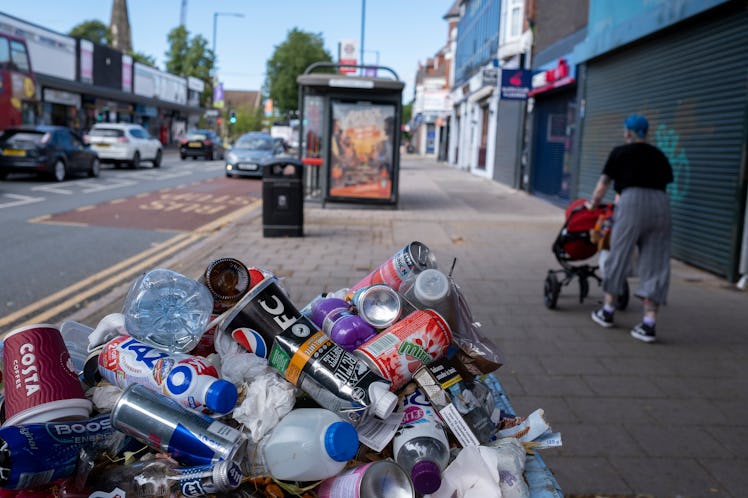95% Of Plastic Waste Wasn't Recycled In 2021, Greenpeace Report Says
Plastic waste is meant to be recycled. A new report shows that most of it in the United States is not.

In a depressing new report, the international environmental watchdog Greenpeace says only 5% of the plastic used in the U.S. in 2021 was recycled. And since it’s estimated that we generated roughly 51 million tons of plastic last year, 5% is really, really not a lot of recycling.
The current rate of 5% is a dramatic decrease from the national high of 9.5% in 2015 and even 8.7% in 2018.
This may be difficult to swallow for those staunch recyclers who carry their canvas shopping bags everywhere and who wash and sort every bit of plastic that comes into their lives before they toss it in their recycling bin. But according to Greenpeace, the U.S. isn’t even able to recycle most plastic — we just don’t have the infrastructure for it.
The organization says most of the types of plastics we use, of which there are literally thousands, aren’t recyclable based on the Ellen MacArthur Foundation’s New Plastic Economy initiative — even milk jugs and soda bottles.
According to Greenpeace, plastic recycling is failing for five main reasons:
- Recycling is difficult to collect due to plastic’s widespread nature
- Plastics are difficult to sort for recycling
- The recycling process itself is harmful to the environment
- Plastics are often made of toxic materials
- It’s just not economically feasible to recycle
“The failure of the concept of plastic recycling is finally becoming impossible for the companies and industry associations that promote it – and the nongovernmental organizations (NGOs) that they fund for this purpose – to ignore,” reads the Greenpeace report. “After three decades and billions of dollars of taxpayer spending, the excuse offered by the American Chemistry Council (ACC) that plastic recycling is still ‘in its infancy’ can now be seen for the delaying tactic that it is.”
Prior to 2018, the U.S. and many other Western nations exported the vast majority of their plastic waste to China. Once it was shipped, it was considered to have been recycled, regardless of what happened to it when the barges got to China.
In 2018, China stopped accepting plastic waste from other countries on the grounds that it was too contaminated and too filthy to recycle. Since then, the U.S. has struggled to get a handle on all the plastic garbage that would typically have been moldering in a Chinese landfill, but was now staying put here in the good ol’ US of A instead.
All hope is not lost, however. Work is underway to draw up a Global Plastics Treaty after more than 170 countries backed a first-of-its-kind United Nations resolution to end plastic pollution. Experts expect the plan, which should be finalized in 2024, to address plastic from production all the way through to waste, with some focus on reuse and refill products.
“The resolution will clearly take us towards a future with no plastic pollution, including in the marine environment. United, we can make it happen,” Japan’s environment minister Tsuyoshi Yamaguchi said of the United Nations resolution. “Together, let us go forward as we start the negotiations towards a better future with no plastic pollution.”
This article was originally published on